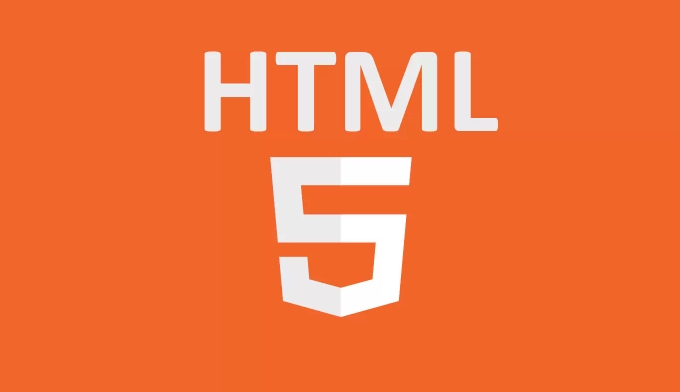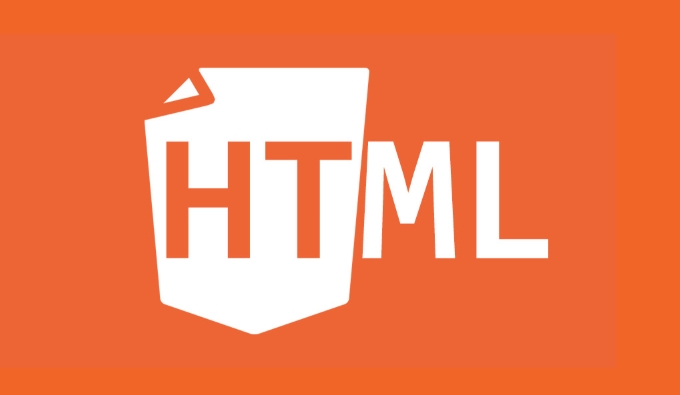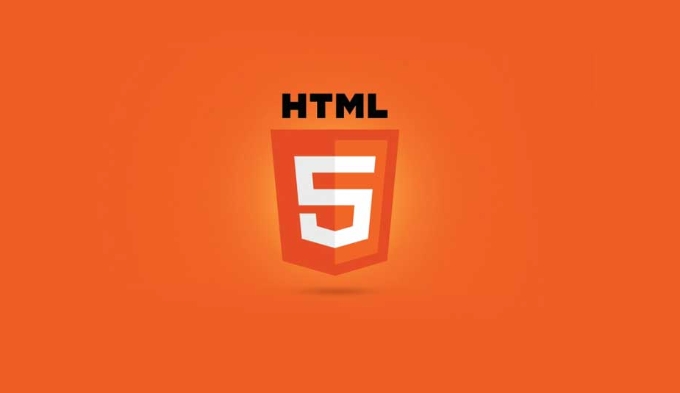To optimize the loading effect of WebP and AVIF images in H5 pages, it is necessary to combine encoding parameters, format compatibility, CDN support and responsive adaptation. 1. Set reasonable encoding parameters, such as the -q value of WebP is controlled between 60 and 80, and AVIF adjusts the compression rate and image quality through --speed and --quantizer; 2. Use the

WebP and AVIF are becoming more and more common in H5 pages because they have high compression rates and do not lose too much image quality. But many people just convert the picture into these two formats and it’s done. In fact, format conversion alone is far from enough. If you want to truly optimize the loading speed and improve the user experience, you have to put some effort into the delivery process.

1. Select the appropriate encoding parameters
Although WebP and AVIF both support lossy and lossless compression, the file size and image quality vary greatly under different parameters.
For example, the quality of WebP's -q parameter control is 75 by default. If it is set too low, it will be obviously blurred. If it is too high, it will lose the meaning of compression. It is generally recommended to control it between 60 and 80, depending on the content of the view. If it is a picture dominated by text or icons, it can be adjusted up appropriately; if it is a photo, it can also maintain the visual effect if it is a picture type.
AVIF is a little more complicated in parameter setting, but mainstream tools like avifenc provide several preset options, such as --speed and --quantizer . The slower the speed, the higher the compression rate; the higher the quantizer value, the lower the mass.
When using it, you can first use the default parameters to see if the volume and image quality meet the standards. If the standards are not met, then fine-tune them.

Common parameter reference:
- WebP:
cwebp -q 75 input.jpg -o output.webp- AVIF:
avifenc --speed 6 --quantizer 35 input.png output.avif
2. Load pictures of different formats as needed
Although mainstream browsers now support WebP, AVIF support is not comprehensive enough. Using AVIF directly may cause some users to see the image loading failure.

The solution is to use the <picture></picture> tag and <source></source> to implement multi-format fallback. For example:
<picture> <source srcset="image.avif" type="image/avif"> <source srcset="image.webp" type="image/webp"> <img src="/static/imghw/default1.png" data-src="image.jpg" class="lazy" alt="Optimizing H5 WebP and AVIF Image Delivery"> </picture>
In this way, the browser will give priority to loading AVIF. If it is not supported, it will be back to WebP, and finally JPEG. Although I wrote a few more lines of code, it can take into account both compatibility and loading performance.
3. Automatic conversion and cache using CDN
If you have a lot of image resources, manually converting formats and optimizing parameters can be troublesome. At this time, you can use the image processing capabilities of CDN, such as Cloudflare's Image Resizing, Alibaba Cloud's image processing services, etc.
These services can dynamically convert formats, adjust sizes, and even automatically optimize parameters when image requests. For example, if you pass a original image, you can return the version in WebP or AVIF format through the URL parameters, and you do not need to generate a bunch of pictures in different formats in advance.
Moreover, the CDN will cache the converted pictures and hit the cache directly on the next visit, which will hardly increase the burden on the server.
For example (taking Cloudflare as an example):
Original image address:
https://example.com/images/photo.jpg
Convert to WebP:https://example.com/cdn-cgi/image/format=webp/images/photo.jpg
Convert to AVIF:https://example.com/cdn-cgi/image/format=avif/images/photo.jpg
4. Pay attention to image size and responsive adaptation
No matter what format you use, the size of the picture itself must be controlled well. Many web pages load slowly not because of the poor format, but because the picture is too large and is always thousands of pixels wide, but only a few hundred pixels are used when displaying it.
suggestion:
- Prepare multiple sets of pictures in advance according to common resolutions
- Use
srcsetattribute to tell the browser which image to load under different screen widths - To match the
<picture></picture>tags for double adaptation of format and size
This not only reduces the loading volume, but also avoids the loss of image quality caused by browser zoom.
Basically that's it. Optimization of WebP and AVIF is not something that can be achieved overnight. It must be considered in combination with format, parameters, and loading methods. If done well, the loading speed will be faster, and the user will take a few more glances; if not done well, the image may not even be loaded.
The above is the detailed content of Optimizing H5 WebP and AVIF Image Delivery. For more information, please follow other related articles on the PHP Chinese website!

Hot AI Tools

Undress AI Tool
Undress images for free

Undresser.AI Undress
AI-powered app for creating realistic nude photos

AI Clothes Remover
Online AI tool for removing clothes from photos.

Clothoff.io
AI clothes remover

Video Face Swap
Swap faces in any video effortlessly with our completely free AI face swap tool!

Hot Article

Hot Tools

Notepad++7.3.1
Easy-to-use and free code editor

SublimeText3 Chinese version
Chinese version, very easy to use

Zend Studio 13.0.1
Powerful PHP integrated development environment

Dreamweaver CS6
Visual web development tools

SublimeText3 Mac version
God-level code editing software (SublimeText3)
 Adding drag and drop functionality using the HTML5 Drag and Drop API.
Jul 05, 2025 am 02:43 AM
Adding drag and drop functionality using the HTML5 Drag and Drop API.
Jul 05, 2025 am 02:43 AM
The way to add drag and drop functionality to a web page is to use HTML5's DragandDrop API, which is natively supported without additional libraries. The specific steps are as follows: 1. Set the element draggable="true" to enable drag; 2. Listen to dragstart, dragover, drop and dragend events; 3. Set data in dragstart, block default behavior in dragover, and handle logic in drop. In addition, element movement can be achieved through appendChild and file upload can be achieved through e.dataTransfer.files. Note: preventDefault must be called
 Securing HTML5 web applications against common vulnerabilities
Jul 05, 2025 am 02:48 AM
Securing HTML5 web applications against common vulnerabilities
Jul 05, 2025 am 02:48 AM
The security risks of HTML5 applications need to be paid attention to in front-end development, mainly including XSS attacks, interface security and third-party library risks. 1. Prevent XSS: Escape user input, use textContent, CSP header, input verification, avoid eval() and direct execution of JSON; 2. Protect interface: Use CSRFToken, SameSiteCookie policies, request frequency limits, and sensitive information to encrypt transmission; 3. Secure use of third-party libraries: periodic audit dependencies, use stable versions, reduce external resources, enable SRI verification, ensure that security lines have been built from the early stage of development.
 Using ARIA attributes with HTML5 semantic elements for accessibility
Jul 07, 2025 am 02:54 AM
Using ARIA attributes with HTML5 semantic elements for accessibility
Jul 07, 2025 am 02:54 AM
The reason why ARIA and HTML5 semantic tags are needed is that although HTML5 semantic elements have accessibility meanings, ARIA can supplement semantics and enhance auxiliary technology recognition capabilities. For example, when legacy browsers lack support, components without native tags (such as modal boxes), and state updates need to be dynamically updated, ARIA provides finer granular control. HTML5 elements such as nav, main, aside correspond to ARIArole by default, and do not need to be added manually unless the default behavior needs to be overridden. The situations where ARIA should be added include: 1. Supplement the missing status information, such as using aria-expanded to represent the button expansion/collapse status; 2. Add semantic roles to non-semantic tags, such as using div role to implement tabs and match them
 Integrating CSS and JavaScript effectively with HTML5 structure.
Jul 12, 2025 am 03:01 AM
Integrating CSS and JavaScript effectively with HTML5 structure.
Jul 12, 2025 am 03:01 AM
HTML5, CSS and JavaScript should be efficiently combined with semantic tags, reasonable loading order and decoupling design. 1. Use HTML5 semantic tags, such as improving structural clarity and maintainability, which is conducive to SEO and barrier-free access; 2. CSS should be placed in, use external files and split by module to avoid inline styles and delayed loading problems; 3. JavaScript is recommended to be introduced in front, and use defer or async to load asynchronously to avoid blocking rendering; 4. Reduce strong dependence between the three, drive behavior through data-* attributes and class name control status, and improve collaboration efficiency through unified naming specifications. These methods can effectively optimize page performance and collaborate with teams.
 HTML5 video not playing in Chrome
Jul 10, 2025 am 11:20 AM
HTML5 video not playing in Chrome
Jul 10, 2025 am 11:20 AM
Common reasons why HTML5 videos don't play in Chrome include format compatibility, autoplay policy, path or MIME type errors, and browser extension interference. 1. Videos should be given priority to using MP4 (H.264) format, or provide multiple tags to adapt to different browsers; 2. Automatic playback requires adding muted attributes or triggering .play() with JavaScript after user interaction; 3. Check whether the file path is correct and ensure that the server is configured with the correct MIME type. Local testing is recommended to use a development server; 4. Ad blocking plug-in or privacy mode may prevent loading, so you can try to disable the plug-in, replace the traceless window or update the browser version to solve the problem.
 Using HTML5 Semantic Elements for Page Structure
Jul 07, 2025 am 02:53 AM
Using HTML5 Semantic Elements for Page Structure
Jul 07, 2025 am 02:53 AM
Using HTML5 semantic tags can improve web structure clarity, accessibility and SEO effects. 1. Semantic tags such as,,,, and make it easier for the machine to understand the page content; 2. Each tag has a clear purpose: used in the top area, wrap navigation links, include core content, display independent articles, group relevant content, place sidebars, and display bottom information; 3. Avoid abuse when using it, ensure that only one per page, avoid excessive nesting, reasonable use and in blocks. Mastering these key points can make the web page structure more standardized and practical.
 Drawing Graphics and Animations using HTML5 Canvas
Jul 05, 2025 am 01:09 AM
Drawing Graphics and Animations using HTML5 Canvas
Jul 05, 2025 am 01:09 AM
HTML5Canvas is suitable for web graphics and animations, and uses JavaScript to operate context drawing; ① First add canvas tags to HTML and get 2D context; ② Use fillRect, arc and other methods to draw graphics; ③ Animation is achieved by clearing the canvas, redrawing, and requestAnimationFrame loops; ④ Complex functions require manual processing of event detection, image drawing and object encapsulation.
 Embedding video content using the HTML5 `` tag.
Jul 07, 2025 am 02:47 AM
Embedding video content using the HTML5 `` tag.
Jul 07, 2025 am 02:47 AM
Embed web videos using HTML5 tags, supports multi-format compatibility, custom controls and responsive design. 1. Basic usage: add tags and set src and controls attributes to realize playback functions; 2. Support multi-formats: introduce different formats such as MP4, WebM, Ogg, etc. through tags to improve browser compatibility; 3. Custom appearance and behavior: hide default controls and implement style adjustment and interactive logic through CSS and JavaScript; 4. Pay attention to details: Set muted and autoplay to achieve automatic playback, use preload to control loading strategies, combine width and max-width to achieve responsive layout, and use add subtitles to enhance accessibility.






